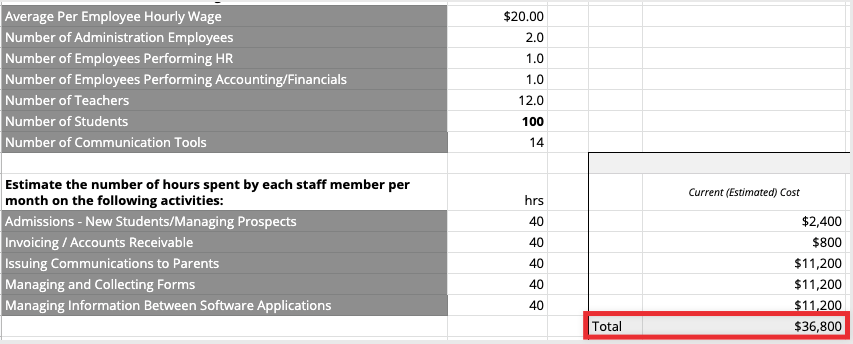You might not believe it, but on average, schools spend $36,000 per month, per 100 students, on managing parent communication and administrative paperwork.
It’s hard to believe, but if you add up all the hours it takes the staff to send and collect information between the school and parents, and all of the other paperwork, it adds up quickly.

Parent communication is not only time consuming, but REALLY expensive.
Here are some tips on how to improve parent communication, make it easier, and less time-consuming as well.
Video Transcription Below
In this lesson, we’ll be talking about how to improve parent communication, but let’s start off with talking about why. Apathy is one of the biggest reasons why parents leave your school.
Your parents need to be engaged. Parent engagement is… Not only is it incredibly critical for the outcomes of students, but it’s also incredibly critical for keeping your retention rates higher. So, you want to make sure that you’re using all the different communication methods that are at your disposal.
In addition to that, you want to make sure that your communication methods and behaviors actually match with the expectations of the parents that are in your school. Why is that so important?
If you consider that the average school director is about 49 years old, and the average parent in your school is 28 years old, and every year, school directors are getting older and older, whereas the parents, they actually stay the same ages, and especially within the last 10 years, if you consider the drastic changes in technology around communication, every year, schools are finding it harder and harder to keep up with the expectations that their new parents have about how they want to be communicated with.
So what you see in a lot of schools is, from teacher to teacher and then across the administration, is all these different kinds of… all these different methods for communicating information from the school to the parents.
Also, communication also incorporates gathering information from the parents, so it’s a two-way process. And if you consider that parents today are spending the majority of their communication time on Facebook more than any other format, the way that schools are communicating today, whether it be a teacher that stuffs a sticky note in a backpack or a school that’s sending a weekly email, with everything that’s going on in the school being sent to every parent, which in reality means that that newsletter that incorporates everything for the school is about 90% irrelevant for most of the parents. Effectively, schools are training parents to ignore them today.
So, what we want to do is make sure that we are catering to the communication expectations of parents so that most importantly, they open up the messages that you send them. We also want to talk about the content that’s in this communication.
Too often, what we see at schools are really long newsletters that, again, incorporate everything that’s going on in the school for every child. That information isn’t necessarily all that exciting. Although it’s important, it’s not necessarily the most engaging.
What parents really want to see, obviously they want to know what’s going on with their child, with their children. They love information of what’s happening in the classroom, but in addition to that, you can really engage parents, especially around parent education programs, by instead of using your newsletters for just a long list of events, and facts, and reminders, and announcements, if you are utilizing the other types of communication tools that can handle reminders about events, and good calendar apps, and other types of shorter message systems, then you can focus your newsletters on more engaging content, things that actually a parent might share with their friends.
You should really think about the content of your newsletters being share-worthy or being funny, or being passionate, or sharing your enthusiasm. You know, make it educational. Make it utility-driven. So along with the method of communication, you also want to be thinking about the types of communication that you’re sending in those different channels.
In addition to that, you really want to be inviting parents in to engage with that communication. So, with those newsletters, or blog posts, or Instagram posts, tweets, text messages, you always want to be inviting parents to give their feedback or to engage a conversation about it.
The more you can engage parents in the conversation, the more they’re engaged in the school, the more they’re going to be developing a relationship with you, and that can have an incredible impact on retention rates, because parents that basically respect you and see you as the wise teachers, educators, that they’re entrusting their children’s education with, if they actually get an opportunity to learn more about what you’re doing and voice their opinions, then you have a deeper relationship with that parent, and they’re much less likely to want to move their child away from something that they know and feel good about. Improving parent communication is something that can be done, and it can have incredible impacts on retention. It’s a combination of using the right tools and sending the right messages.

